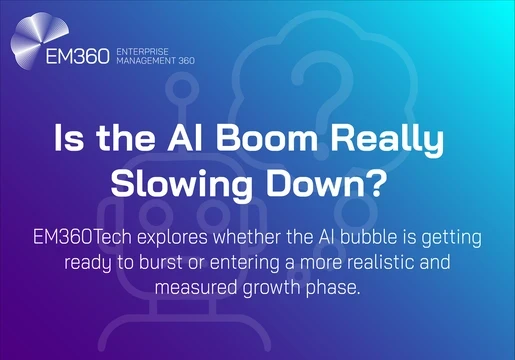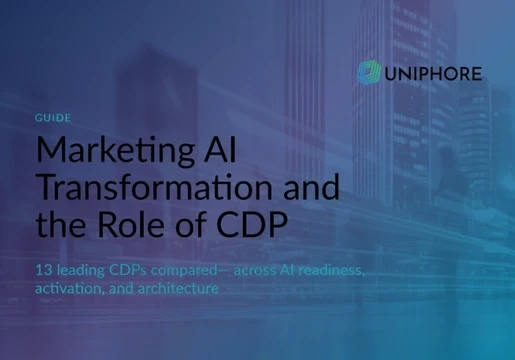The world is in the era of AI, and we are quickly moving toward the age of intelligence. Organisations across the globe have realised the potential hosted by AI, and how leveraging that potential can help them in extracting the best possible results. We are seeing a massive increase in the investment companies across the globe are making in AI. AI is being called a game-changer in this regard, as companies look to improve management of resources and extraction of intelligence through the use of the mechanism that is AI. Businesses want to implement AI for improving their competitive advantage over others around them and to improve the current business model they have in place. This technique for the implementation of AI can work well for small-scale projects, and for small-scale work, but how true and implementable is it when it comes to managing end-to-end enterprise-wide AI? End-to-end enterprise-wide AI is a completely different ball game altogether, one that requires different strategies, different aims, and different goals. Ronald Van Loon has been an SAP partner for some time now, and he has exclusive access to all the information and launches of data management solutions being organized by SAP. He also has access to their research work and the insights that they keep working on for the future. Working with SAP through the course of the last few years, Ronald Van Loon has found out a lot of the specifics needed for becoming an intelligent company that focuses on AI. Becoming an AI enterprise that follows end-to-end management isn’t a walk in the park, but SAP knows all about it. There are numerous challenges on the way, but these challenges can easily be overcome through the implementation of the right methods.

Challenges
As mentioned above, becoming a data company with end-to-end data management isn’t an easy job to do. There are numerous challenges that will be encountered on the way. These challenges include the following:
How to Scale
Scaling your growth from POC to deployment can be a tough ask if you have set up as an AI “silo” with separate ETL processes. Building your POC on an end-to-end enterprise platform provides the capability to scale your roll-out directly after successfully ending your POC.
Data Quality Challenges
All the insights you generate from your data will only be as good as the data that you are putting into the system. The insights from your AI end-to-end system won’t hold much value if the data that you are inputting into the system does not have the desirable quality. The quality of the data is directly relevant to the sources you are using for extracting data. If the sources you are using for the extraction of data cannot be trusted, then the quality of your data will suffer and fall. The best way out of this conundrum is to have a trusted data management team on board, so that the inflow of data is well governed.
Data Governance and Security
Once you have ensured the quality of the data, you need to govern it and make sure that it is kept secure at all times. Data governance is extremely important for keeping your data accessible in a controlled way and ready for implementation within the system. By governing data, you will ensure that all processes are followed. Additionally, maintaining data security can be a challenge, as any breaches can land you on the wrong side of the law and lead to costly repercussions. You don’t want to pay heavy legal fees just because you didn’t adhere to the security requirements for your data.
Maintaining Hybrid Nature
Lastly, maintaining the hybrid nature of your data can be a challenge in its own. In an end-to-end enterprise data management system, your data will be present on the cloud as well as within your premises. This hybrid setting does give you multiple benefits, which are synonymous with end-to-end management, but then again, you need to make sure that management and data governance are top notch in all cases.
The Enterprise End-to-End AI Management Process
Once you have understood the challenges, you can get to understanding the process that is used for end-to-end AI management.
Connect and Access Data
The first step in the whole process is to find the data that is relevant to your needs. You need to access this data and connect it together, so that it is prepared for your needs. Relevant data is a must for your process, as it will decide the kind of results you are able to extract from it.
Prepare Data
Once you have access to data that is relevant to your cause, you need to prepare this data for future results. This is an important part of the process, as your data needs to be clean and prepared before it is inputted within the systems you have in place. You can use multiple systems for cleaning and preparing your data. Note that it’s important to eradicate any signs of repetition or poor quality within the data.
Build and train AI and ML Models
Once you have readied the data, you can get to building and training AI and ML models. Both of these models will be responsible for extracting the relevant results from the process, which is why you need to make sure they are built the right way. You can use open source technology like Jupyter Notebooks here, as it will increase coordination among staff members. It is necessary that you train the models as well so that they are aware of the process that should be followed for result extraction.
Deploy AI and ML Models
Once you have built and trained the AI and ML models, it is time for you to deploy them for extracting results. Your AI and ML models should be deployed in a manner that is the correct fit for use. Do not hurry the deployment process; make sure you thoroughly train the models first. Once deployed, you can start the flow of data through these models and check results as they come in.
Monitor, Analyse, and Manage
After deployment, all you need to do is monitor, analyse, and manage the flow of data around you. Monitor the results that are coming through and analyse them to manage your system accordingly. If you keep a stringent eye on the models and the end-to-end AI system within your enterprise, you will be able to maximise the results you get from the system.
Market Developments
SAP provides a solid foundation for all your enterprise data, and ensures that you are flawlessly able to get the most out of your end-to-end AI management process. The move to the next level of AI and data intelligence is being pushed forward by service providers such as SAP, which are helping organisations achieve excellent data management. New developments within the market mean that organisations are now ready to jump onto the end-to-end enterprise AI data management system. The future of enterprise data management is here, and it is just as exciting as you may have imagined.
Enjoy this piece? Why not check out the Top 10 Edge Computing Vendors for 2019?







Comments ( 0 )